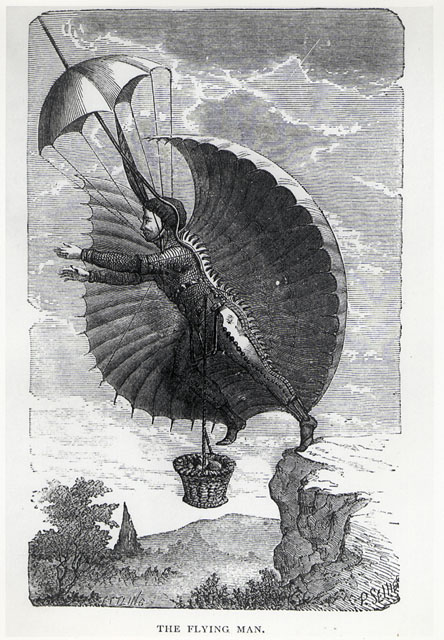Parachuteless Freaks
Their parachutes didn’t open..and they survived
/https://tf-cmsv2-smithsonianmag-media.s3.amazonaws.com/filer/c8/13/c81361e1-b2f9-4e27-9233-3d967199c7dc/wave_parachute.jpg)
On March 23, 1944, a British Lancaster bomber over Germany's Ruhr River took heavy flak and exploded. As his oxygen mask and goggles began to melt, and his flight suit burned, tail gunner Nick Alkemade heard the pilot ordering the crew to bail out.
The aircraft was at 18,000 feet, and while Alkemade was wearing his parachute harness, he could see that his silk parachute—stored in its rack by the turret doors—was already burning.
What to do?
Well, if you're Alkemade, you walk calmly over to the turret doors and backflip into space.
As Paul Brickhill wrote in 1950 ("They Fell without Parachutes—and Lived!"), three hours later Alkemade "opened his eyes and saw pinpoints of stars through a screen of pine branches above.... The branches had broken his fall, and then he had dropped into a deep snowdrift, and the snow and his lined leather kit had softened the blow still more."
Dazed from a bump on his head, and immobile due to a wrenched knee, Alkemade lay in the snow until the Germans arrived. They took Alkemade to Stalag Luft III, where he met Brickhill, an Australian Spitfire pilot and journalist who had also been shot down.
The Germans gave Alkemade a document which said, It has been investigated and corroborated by the German authorities that the claim made by Sergeant Alkemade is true in all respects, namely that he made a descent from 18,000 feet without a parachute and made a safe landing without injuries, the parachute having been on fire in the aircraft. He landed in deep snow among fir trees.
Amazingly, Alkemade was not the only airman in the camp who had survived a parachuteless fall; Brickhill interviewed several others during his time as a POW. There was Wing Commander Ken Burns, whose Lancaster exploded at 18,000 feet, throwing him (still strapped in his seat) from the aircraft. When he regained consciousness, he was lying in a cabbage patch with his parachute still on—unopened. (Burns' fall resulted in a collapsed lung, a cracked spine, and an amputated arm.)
Flight Lieutenant Gutowski, also in the RAF, had to bail from his Spitfire after being hit by a Focke-Wulf Fw 190. His parachute malfunctioned; after falling 150 feet, he landed in a pile of beet leaves, where he "rolled unhurt to the ground."
There's also the case of Pilot Officer Fred Bist, of the Canadian Air Force. His Douglas Boston bomber was strafed at 500 feet when the airplane broke in two; Bist was thrown out of the aircraft—without his parachute. He landed in a plowed field, where he was discovered by two German soldiers. They took Bist to the hospital where he was treated for a broken neck, severe burns, and a broken hand.
French artillery spotter Capitaine Larmier was in a Potez 63 when an enemy shell hit his aircraft and damaged the controls. Larmier jumped over the side. Unfortunately, he was at 100 feet, and parachutes need 400 feet to deploy. Just as the parachute started to stream out of his pack, Larmier hit "the top of a haystack, bounced, and stayed up there, winded, shocked and dumbfounded."
Alas, his luck didn't hold out. The Germans found him, "and he went on to five years behind barbed wire."